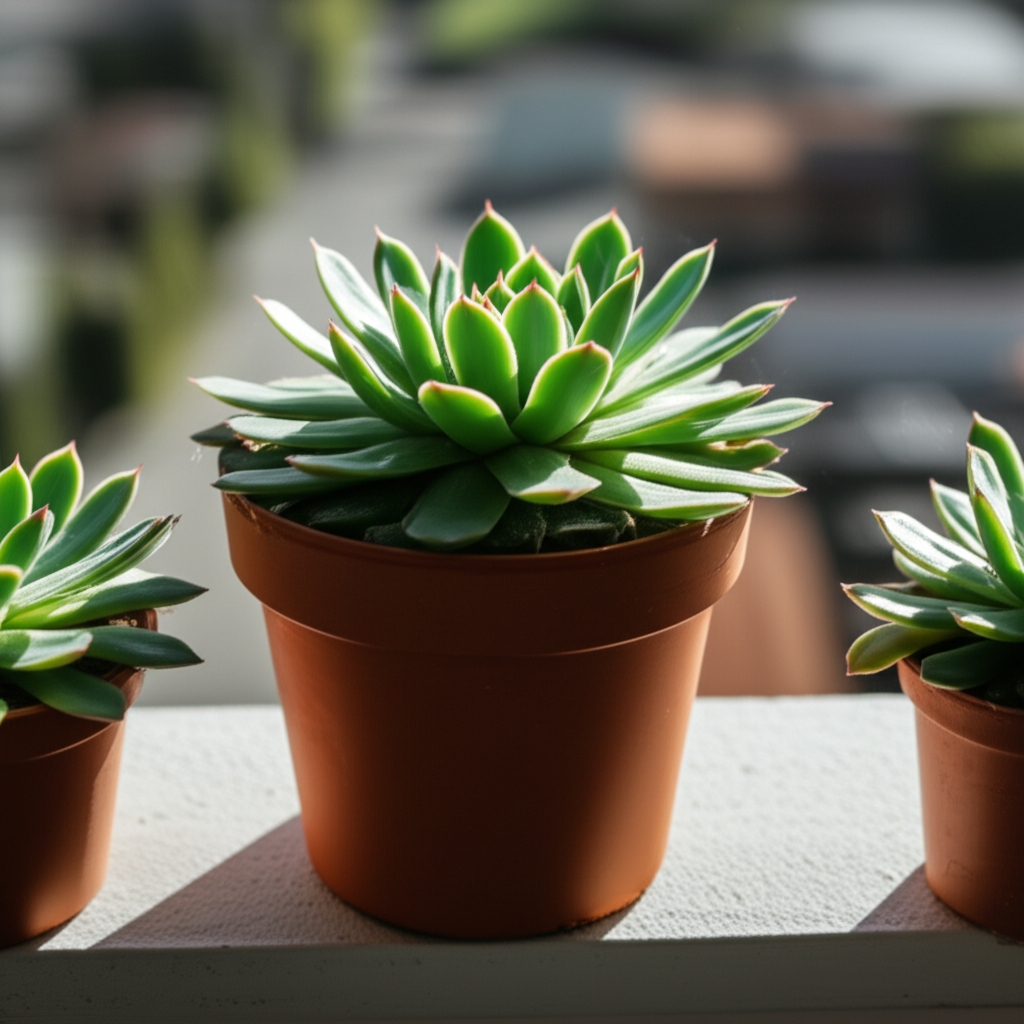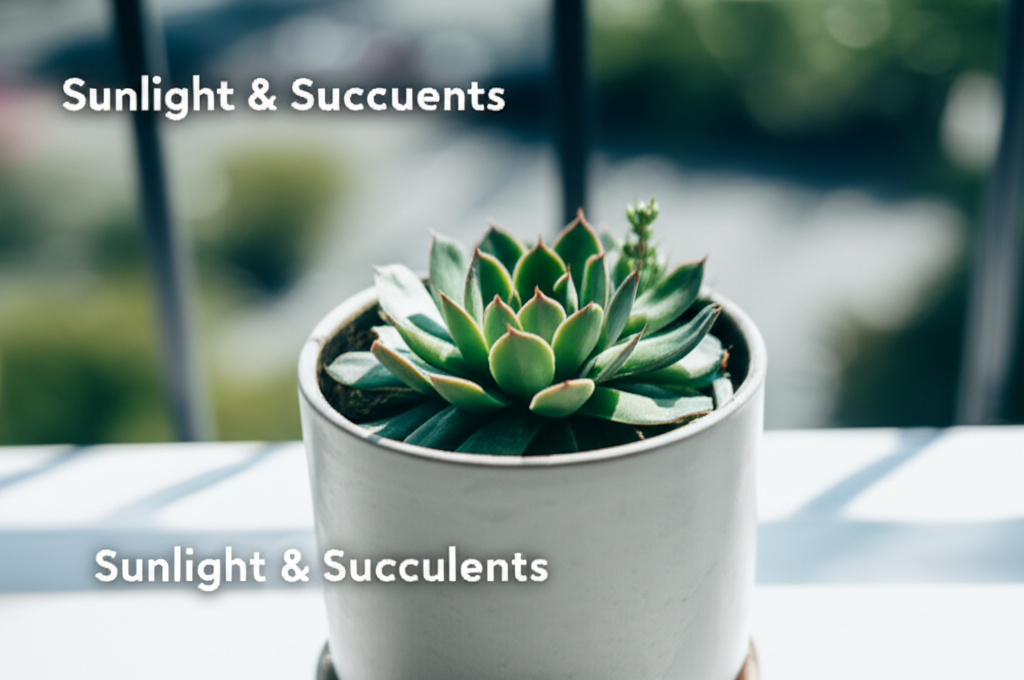The Dazzling Ice Plant: A Balcony Star
Ice plants, scientifically known as Mesembryanthemum species, are beloved for their dazzling, dew-like papillae that glisten in the sun, giving them their unique name. These hardy succulents are popular choices for balcony gardens, bringing vibrant colors and low-maintenance beauty to urban spaces. However, like all plants, ice plants have specific needs, and understanding their relationship with sunlight is paramount to their success. This comprehensive guide will delve into the intricacies of managing sunlight for your balcony ice plant, ensuring it thrives and continues to be a source of admiration.
Understanding Ice Plant Light Requirements
Ice plants are native to the arid regions of South Africa, where they are accustomed to intense, direct sunlight for extended periods. This heritage dictates their primary need: ample light. However, “ample” can be a nuanced term, especially when dealing with the varied conditions found on a balcony.
- Full Sun: Ideally, ice plants prefer at least 6-8 hours of direct sunlight per day. This is the golden rule for most varieties.
- Intensity vs. Duration: While duration is important, the intensity of sunlight also plays a role. Afternoon sun in hotter climates can be scorching and may require some mitigation.
- Coloration and Flowering: Sufficient sunlight is crucial for developing the vibrant colors of their leaves and stimulating abundant flowering. Insufficient light often leads to leggy growth and fewer blooms.
Balcony Sunlight Dynamics: A Unique Environment
Balconies present a unique microclimate. Unlike a garden bed, a balcony’s sunlight exposure is dictated by several factors:
- Orientation: The direction your balcony faces is the most significant determinant of its light profile.
- Overhanging Structures: Eaves, awnings, or neighboring buildings can cast shadows at different times of the day.
- Time of Year: The angle of the sun changes seasonally, affecting how much direct light reaches your plants.
- Surrounding Buildings: Tall structures can block sunlight for a significant portion of the day.
Assessing Your Balcony’s Sunlight Patterns

Before you can effectively manage sunlight, you need to understand your specific balcony’s light exposure throughout the day and across the seasons.
The Importance of Observation
The best way to assess your balcony’s sunlight is through careful observation. Dedicate a few days to tracking the sun’s path and noting where and when sunlight falls on your planting areas.
Morning Sun (East-Facing Balconies)
East-facing balconies receive the gentle morning sun. This is often the ideal scenario for ice plants, as it provides ample light without the harshness of the midday or afternoon sun.
Midday Sun (South-Facing Balconies in the Northern Hemisphere)
South-facing balconies (in the Northern Hemisphere) receive the most intense sunlight, particularly during the midday hours. This can be excellent for ice plants, but careful monitoring is needed during peak summer months.
Afternoon Sun (West-Facing Balconies)
West-facing balconies get the afternoon sun, which can be quite hot and intense, especially in the summer. This requires more attention to potential scorching.
Limited Sun (North-Facing Balconies)
North-facing balconies receive the least direct sunlight. While some ice plant varieties might tolerate partial shade, they will likely not thrive or flower as profusely as those in sunnier spots.
Seasonal Variations
Remember that the sun’s angle is lower in winter and higher in summer. This means a spot that gets direct sun for only a few hours in winter might receive full sun for most of the day in summer.
Strategies for Optimal Ice Plant Sunlight Management
Once you’ve assessed your balcony’s light conditions, you can implement strategies to ensure your ice plant receives the right amount of sun.
Maximizing Light Exposure
For balconies with less direct sunlight, maximizing what you get is key.
- Strategic Placement: Position your ice plants in the brightest spots available. This might mean near the railing or in areas that receive unobstructed sunlight.
- Container Choice: Light-colored pots can reflect more light onto the base of the plant compared to dark pots, which absorb heat and can sometimes lead to the plant being shaded by its own pot.
- Elevate Your Plants: Using plant stands or shelves can help elevate your ice plants, potentially lifting them above temporary obstructions or into more direct sunbeams.
Mitigating Excessive Sunlight
In areas with intense, hot afternoon sun, some protection might be necessary to prevent scorching.
- Shade Cloth: Using a lightweight shade cloth (e.g., 30-50% shade) during the hottest part of the day can protect your ice plants from extreme heat. This can be draped over a frame or attached to a structure.
- Companion Planting: Strategically placing taller, more shade-tolerant plants (that still receive some sun) nearby can offer dappled shade to your ice plants during the hottest hours. Ensure these companion plants are also succulents or drought-tolerant to avoid overwatering issues.
- Relocation: If possible, have a spot on your balcony that receives less intense sun (e.g., under an awning for a few hours) where you can temporarily move your ice plant during heatwaves.
Rotating Pots
Regularly rotating your ice plant pots (every week or two) ensures that all sides of the plant receive even exposure to sunlight. This promotes balanced growth and prevents the plant from leaning excessively towards the light source.
Choosing the Right Ice Plant Varieties
Not all ice plants are created equal when it comes to light tolerance. Some varieties are more robust than others.
Key Facts and Comparison of Ice Plant Light Preferences
The following table provides a general overview of how different types of ice plants might fare with varying light conditions. It’s important to remember that individual plant health, watering, and soil also play a significant role.
| Ice Plant Type/Genus | Common Name(s) | General Light Requirement | Tolerance to Intense Afternoon Sun | Tolerance to Partial Shade |
|---|---|---|---|---|
| Delosperma | Hardy Ice Plant | Full Sun (6+ hours) | Moderate (can scorch if extreme) | Tolerates some, but flowering reduced |
| Lampranthus | Livingstone Daisy, Ice Plant | Full Sun (8+ hours) | High (very heat tolerant) | Poor (leggy, few flowers) |
| Aptenia cordifolia (syn. Mesembryanthemum cordifolium) | Heartleaf Ice Plant | Full Sun to Partial Shade (4-6 hours) | Moderate | Good (but may be less compact) |
| Mesembryanthemum crystallinum | Common Ice Plant, Crystal Ice Plant | Full Sun (6+ hours) | Moderate | Tolerates some, but best in sun |
Factors Influencing Light Management Success
Beyond direct sunlight, several other factors contribute to the overall health and success of your balcony ice plant.
Watering and Drainage
Even with perfect light, improper watering can doom your ice plant.
- Drought Tolerance: Ice plants are succulents and store water in their leaves. They prefer to dry out between waterings.
- Overwatering: This is the most common killer of succulents. Ensure pots have drainage holes.
- Watering Schedule: Water thoroughly when the soil is dry to the touch, typically less frequently in cooler months.
Soil Composition
The right soil is crucial for drainage and aeration.
- Cactus/Succulent Mix: Use a well-draining potting mix, often labeled for cacti and succulents.
- Amendments: You can improve drainage by adding perlite, pumice, or coarse sand to a standard potting mix.
Temperature and Airflow
Balconies can experience temperature fluctuations.
- Heat Retention: Paved balconies can absorb and radiate heat, potentially stressing plants.
- Air Circulation: Good airflow helps prevent fungal diseases, especially in humid conditions.
Troubleshooting Common Sunlight-Related Issues
Observing your ice plant for signs of stress will help you adjust your sunlight management strategy.
Leggy Growth (Etiolation)
If your ice plant is stretching with long, weak stems and sparse foliage, it’s not getting enough light.
Solutions:
- Move the plant to a brighter location.
- Increase the duration of sunlight exposure.
- Consider pruning back leggy growth to encourage bushier development.
Leaf Scorching
Brown or bleached patches on the leaves, especially on the sun-facing side, indicate too much intense sunlight.
Solutions:
- Provide partial shade during the hottest part of the day (e.g., midday or afternoon).
- Use shade cloth or relocate the plant.
- Ensure adequate watering during hot periods, but avoid watering leaves directly.
Faded Colors
While some fading can occur naturally, a significant loss of vibrant leaf color, especially when accompanied by weak growth, might suggest insufficient light.
Solutions:
- Gradually increase light exposure.
- Ensure the plant is not overwatered, as this can also impact color.
Step-by-Step Guide to Managing Ice Plant Sunlight on Your Balcony
Here’s a practical approach to ensure your ice plant thrives in its balcony environment.
| Step | Action | Purpose |
|---|---|---|
| 1 | Assess Balcony Orientation: Determine if your balcony faces North, South, East, or West. | Understand the general light exposure patterns. |
| 2 | Track Sunlight Patterns: Observe sunlight movement on your balcony throughout the day and across seasons. | Identify specific sunny and shady spots. |
| 3 | Select Appropriate Varieties: Choose ice plant species known for their tolerance to your balcony’s light conditions. | Ensure a good match between plant needs and available light. |
| 4 | Strategic Placement: Position plants in areas receiving at least 6-8 hours of direct sunlight. | Maximize light exposure for optimal growth and flowering. |
| 5 | Monitor for Stress: Regularly check for signs of leggy growth (too little sun) or leaf scorching (too much sun). | Early detection allows for timely intervention. |
| 6 | Implement Mitigation if Needed: Use shade cloth, companion planting, or temporary relocation for intense afternoon sun. | Protect plants from sun scorch. |
| 7 | Rotate Pots: Turn pots every 1-2 weeks. | Promote even growth and light exposure. |
| 8 | Adjust Watering and Soil: Ensure excellent drainage and water only when the soil is dry. | Support overall plant health, making it more resilient to light stress. |
Conclusion: A Sun-Kissed Balcony for Your Ice Plant
Managing sunlight for your balcony ice plant is a rewarding endeavor. By understanding the plant’s inherent needs and the unique dynamics of your balcony environment, you can create a thriving habitat. Careful observation, strategic placement, and a willingness to adapt your approach will ensure your ice plant flourishes, gracing your balcony with its characteristic sparkle and vibrant blooms. Embrace the challenge, and enjoy the dazzling display your well-loved ice plant will provide.


